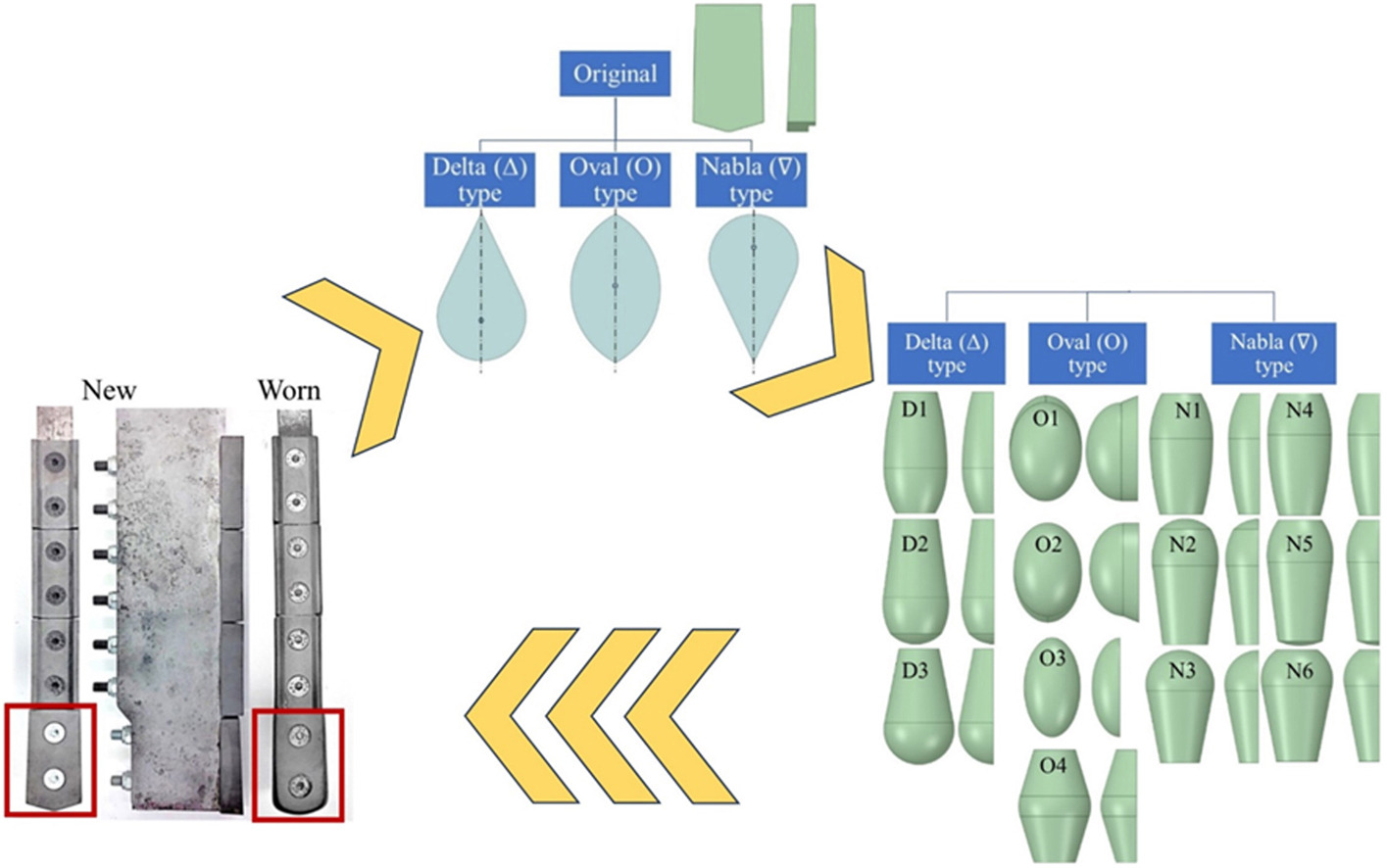• Ship bulbous bow geometries implemented for agricultural soil machinery.
• The round shape tool designed for the soil processing.
• Discrete element method (DEM) used to compare simulations and experiment results.
• Draught force comparison used to perform experiments and simulations.
Over the past decades, scientists have studied tillage and soil processing technologies based on the classical shapes of agricultural tools. Numerous studies highlight the importance of agricultural tool longevity in relation to abrasive wear resistance and draught force values. However, these studies are typically limited to the most common shapes and types of tools. This paper combines the insights gained from the marine industry's experience in the design of ship's bulbous bows with the challenges of designing soil rippers for agricultural machinery. New shape elements were developed based on the delta, oval, and nabla types of bulbous bows used in ships. Thirteen types of designed elements, along with the original shape, were tested virtually using the Discrete Element Method (DEM). The 3D-printed samples were then tested in a sand bin to measure draught force. DEM simulation parameters were validated by measuring the Static Angle of Repose (SAOR) of sand. The results of this study demonstrate that applying a bulbous bow-inspired shape to the soil ripper can reduce draught force by 7.1 %; however, in some cases, it can also increase the force by 4.1 % compared to the original shape. The values are giving statistically significant differences between the experimental measurements. To fully evaluate the application of these designed elements, further soil disturbance and wear analysis studies should be conducted in future research.

